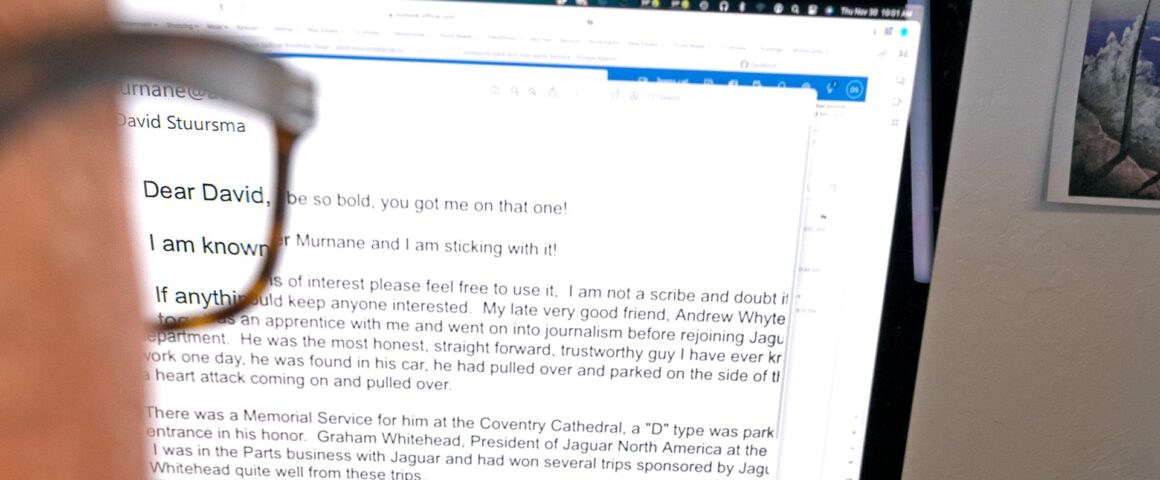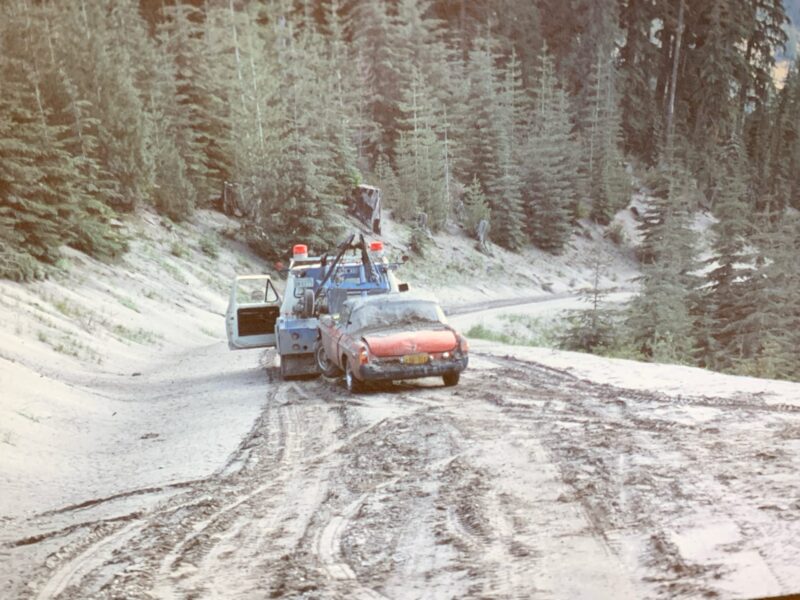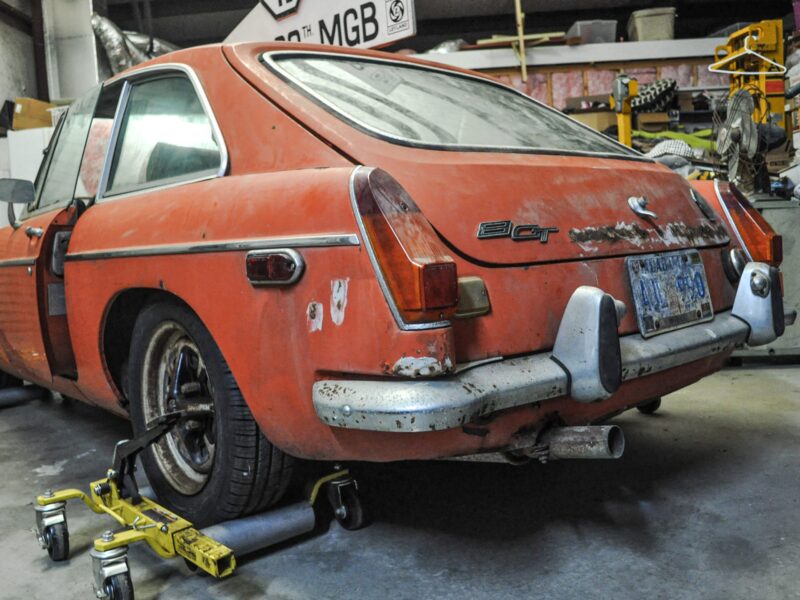Dear Mr Stuursma,
I read your magazine with great interest. I pass along these ramblings of an old man and, as such, are not intended for publication.
When I left High School in England, I was interviewed by the then Mr William Lyons and other board members, and was accepted by Jaguar Cars in Coventry as an Apprentice Engineer. Thus, I spent four years working in various departments of the factory, and the stories in your magazine have awakened memories. One I recall, I was working in the Experimental Department during the development of the XK150. There was a mockup of the proposed car and a modified left-hand front (wing) fender from a XK140. We had to hold the fender in place, at various angles, until Mr Lyons said we had it right. Thus the lines of the XK150 were established.
The bonnet of the XK150 was actually that of a XK140 cut in two with about a four-inch extension welded between the two halves.
During the development of the XK150 some welding had to be done on a cantrail, the piece on the convertible top that spans the door window. This was aluminum, and nobody in the experimental department wanted to do it because welding aluminum has a special technique. I volunteered, having no idea that I was being set up, and did it. No idea how I did it, have never been able to weld aluminum since, not that I have tried much.
I had a “Works Driving License,” a coveted item in those days. Thus, driving jobs would often come my way which, as a young twenty year old, were very welcome. There was one design engineer who did not drive, never learned, and had no desire to! Whenever he had to attend a meeting elsewhere, I was called upon to take him.
The last year of my apprenticeship I was given the job of demonstration driver for the duration of the London Motor Show. There were three of us to drive a XK150, a 3.4 Saloon (Sedan), and a 2.4 Saloon. Our route included crossing Chiswich Bridge over the Thames. There was, and still is, woodland on the North side of the bridge, no buildings, just open road through trees. Our instructions were to reach 100 MPH going North over the bridge and then demonstrate the brand-new disc brakes that were being introduced on the 3.4 liter engined cars. All perfectly legal then. Today there is a 40 MPH limit, but one would be lucky to reach that speed due to traffic. On reflection we must have been thought to be expendable.
When my apprenticeship was over, I wanted to come to the United States and had arranged a job with the Jaguar Distributor in Indianapolis. My Mother was from the Chicago area, we had lived there during WWII, so, in a way, it was like coming home. On the way I stopped in Ottawa, Canada, to visit an aunt and uncle. My uncle was the British High Commissioner to Canada at the time. I expressed interest in visiting the Jaguar dealer in Ottawa while I was there so my uncle sent me in the company car, a chauffeur driven Rolls Royce. I have often wondered if he had mentioned this to his boss? Misuse of company funds perhaps? Since Her Majesty and my uncle are no longer with us, I feel I am free to tell the tale.
The Indianapolis job did not work out, instead I did my military service in the U.S. Army and then joined Jaguar Cars North American Corporation in New York.
My girlfriend, from high school days, and I have been married almost 64 years. She feels part of the Jaguar family to the extent that she keeps two Jaguars at our house in Florida, a 2001 VDP which she has had since new, and a 2005 XK8 convertible, with very few miles, that she bought recently from a neighbor who was having trouble getting in and out of it.
Dear “Rambling Old Man” who pressed “send” before attaching his name…
I respect your request to keep your words between you and I, but I would love for you to reconsider. Old British cars are special on their own, but what makes them really special are the people who’ve had a hand in making them, improving them, or are now bringing them back to life to be enjoyed all over again. Stories like your ramblings really do have an impact on the men and women today who are working on and enjoying these cars. I hear it all the time. For some, the little detail of the knowing the difference between the making of a bonnet of an XK140 and 150 is huge. I, for one, will never not see those extra four inches from this day forward, and I’m glad for that! I believe the cars we love have the personalities they do because they’ve taken on some of the character of the men (like yourself) and women who put them together.
I was emailing with my coworker, Michael Marter, the other day about the XK150 bonnet and his response was: “Sir William Lyons was known for being ‘thrifty’— I’m sure they called him a ‘cheap bastard’ behind his back. It was actually amazing what Jaguar was able to produce for such a reasonable price. The E-Type, for instance, made contemporary Ferraris look like ox carts with their solid rear axles on leaf springs!”
Your first-hand experiences, written in appreciation for others’ stories, are heartwarming. If you change your mind and decide to ramble some more, I would be honored to provide space in our little magazine.
In the meantime, at least let me know your name.
~David
Dear David,
If I may be so bold, you got me on that one!
I am known as Peter Murnane and I am sticking with it!
If anything I write is of interest please feel free to use it. I am not a scribe. My late very good friend, Andrew Whyte, was the one for that. Andrew was an apprentice with me and went on into journalism before rejoining Jaguar in the publicity department. He was the most honest, straight forward, trustworthy guy I have ever known. Didn’t show up for work one day, he was found in his car, he had pulled over and parked on the side of the road. Must have felt a heart attack coming on and pulled over. There was a Memorial Service for him at the Coventry Cathedral. A D-Type was parked at the entrance in his honor.
Andrew was well known and very much respected. He was a Scot, a group of folks known to be on the frugal side. One time my wife, Anne, and I stopped to see him at his house while driving to Coventry from London. It was a coolish day by British standards so, to honor his guests from the US, Andrew put an extra lump of coal on the fire!
I mentioned that I was interviewed by Mr. Lyons—as was Andrew—a year or two after us he left the interviewing to others, so, for what it is worth, I must be part of a small living group who were interviewed by the founder of Jaguar.
I’m sure your co-worker’s comment on Sir William being known as a “Cheap Bastard” is correct but, to his credit, there was an older gentleman, Harry Siverter(?), who had worked with Lyons years before and to whom Lyons must have felt indebted. Harry was crippled with arthritis, I mean crippled. Harry was kept on the payroll to answer the phone in the Drawing Office but needed to be picked up and returned to his home every working day. While working in the Drawing Office myself, and having that coveted works driving license, that job often fell to me. I was literally going into his house and helping him out and into the car, a Mk VII or Mk VIII. I don’t recall if I continued after I left the Drawing Office, may well have.
My Mum, prior to meeting my dad, had been a grade school teacher in America. There were many American military with families stationed in England and a need for American schools for American children. My Mum went back to work, teaching in the American school system for the USAF. This enabled her to purchase an American car at US prices. She bought a used 1953 Studebaker. At one point I was working in the Experimental Department with heaters. I brought in our Studebaker to demonstrate just what sort of heating was required in North America. It had an under-seat outlet as well as under dash. Before we had made one circuit of the factory, the engineer, to whom I was demonstrating it, was begging me to turn it off!
I shall look for photographs that might be of interest to you. Speaking of photos, we apprentices were on good terms with the factory works photographer. I recall one race event at Silverstone where “Pit Passes” were limited but in high demand. They were printed in black and white and attached to the windscreen. Copy machines, as we know them today, did not exist, but photography did. Several cars entered the pit area that weekend with photographs of pit passes in their windows. The vagrancies of youth!
Cheers…
Peter Murnane








'Taking The Lead' has no comments
Be the first to comment this post!